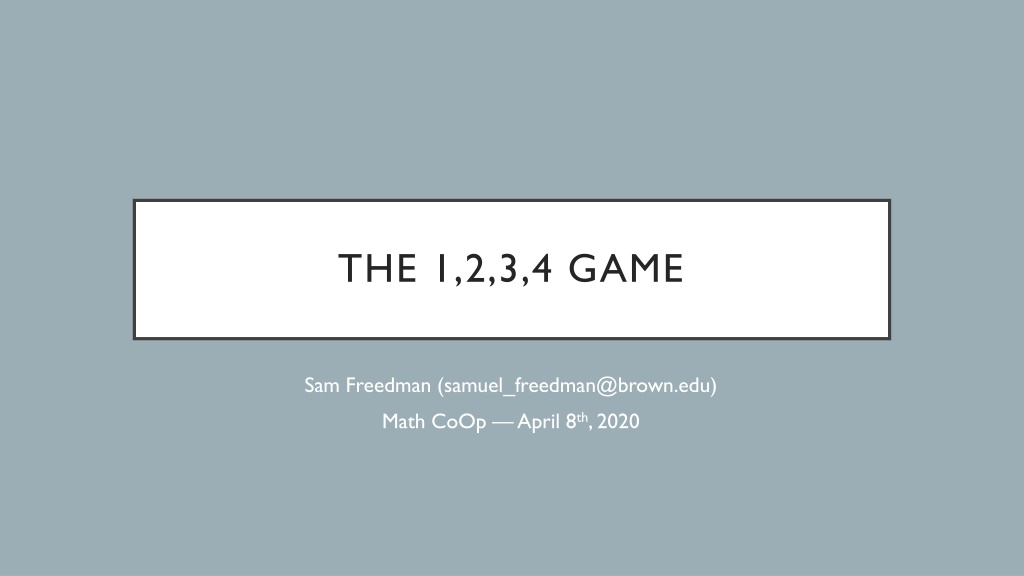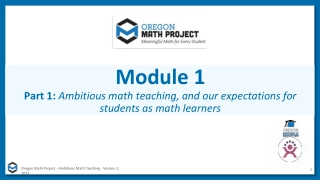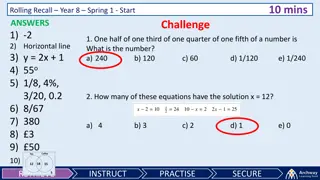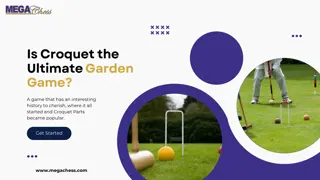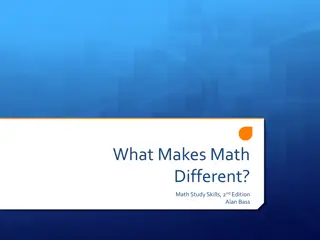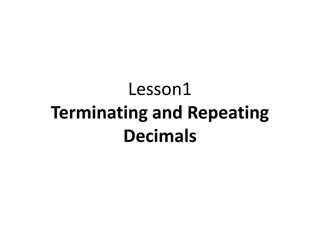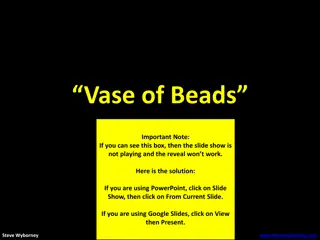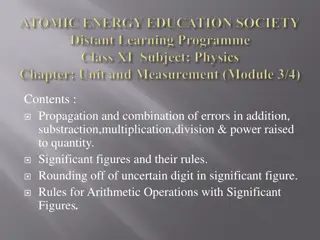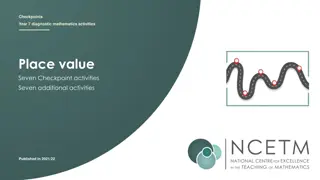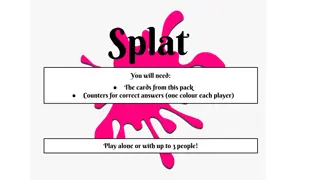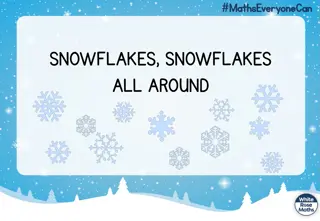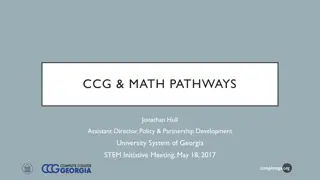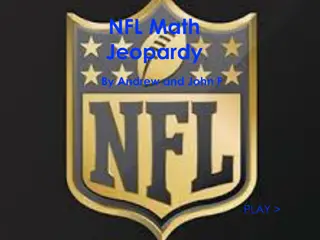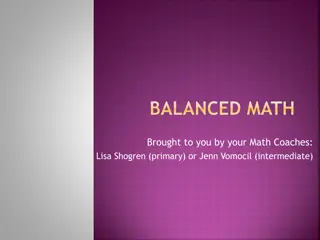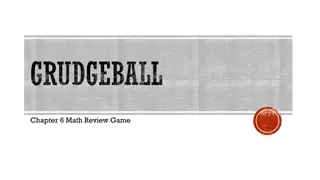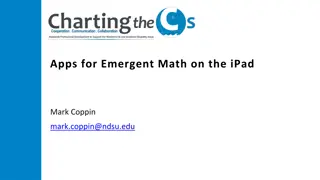Fun Math Game with Digits 1, 2, 3, 4
Engage students in a stimulating math activity where they use digits 1, 2, 3, and 4 with addition, subtraction, and multiplication operations to create various numbers. This interactive game encourages teamwork, critical thinking, and creativity in exploring mathematical concepts. Students can discover new rules, modify existing ones, and push the boundaries of arithmetic possibilities while having fun. The game fosters curiosity, problem-solving skills, and a deeper understanding of mathematical operations.
Download Presentation

Please find below an Image/Link to download the presentation.
The content on the website is provided AS IS for your information and personal use only. It may not be sold, licensed, or shared on other websites without obtaining consent from the author.If you encounter any issues during the download, it is possible that the publisher has removed the file from their server.
You are allowed to download the files provided on this website for personal or commercial use, subject to the condition that they are used lawfully. All files are the property of their respective owners.
The content on the website is provided AS IS for your information and personal use only. It may not be sold, licensed, or shared on other websites without obtaining consent from the author.
E N D
Presentation Transcript
THE 1,2,3,4 GAME Sam Freedman (samuel_freedman@brown.edu) Math CoOp April 8th, 2020
Question: Using the digits 1,2,3 and 4 and the operations addition, subtraction and multiplication, which numbers can we make by using each digit at most once? 5 = 1 + 4 6 = 2 * 3 7 = (1 + 2) * 4 8 = ? Examples OBJECTIVE 2 = 1 + 1 (uses 1 twice) Non-Example
Materials: Paper and pencil for each student Group writing surfaces like a whiteboard or paper on the wall SET-UP Groups: Smaller groups of 2-5 are better Maybe appoint a scribe?
Can have one mentor at the board as group scribe guiding the search for new numbers, recording rule changes, etc. Can have each group maintain its own set of rules and found numbers IMPLEMENTATION Ideally students work together to find new numbers, although student s comfort with arithmetic varies individually
Caution: These are all audience- dependent. Most changes are proposed mid-game Examples: RULE MODIFICATIONS Negatives: Use subtraction as a minus sign, so (3 * 4) is valid Squares and Cubes: Use the digit 2 for squaring, making (3 + 4)^2 valid Exponentiation: Allow for 2^3 or 3^(4 + 1) Fractions: Allow for division as an operation
GOALS Smallest number that s impossible? Students love trying to make 100 (do you think it s possible?) Largest possible number? Smallest possible number? How do we know that we found everything? What if we allow for more starting digits, such as 5?
EXTENSION: EXHAUSTIVE SEARCH Code by Sarah Griffith-Siqueira (Grad Student in Math Department)
TAKE-AWAYS Playing with numbers can be a lot of fun! Impossibility in math how do we really know? In math, you get to make and break the rules.
